Overview
Avanza Bank underwent a comprehensive agile transformation to address internal inefficiencies and enhance its market responsiveness. Initiated by a need to overcome inter-team dependencies, increasing lead time to change, decreasing staff motivation, and leadership silos, the transformation sought to implement systemic changes across the organization, aligning with its customer-first culture.
The Challenge
Initially, Avanza’s structure comprised component teams that had naturally evolved as the organization scaled. This setup, while beneficial in the early stages, had led to deepened dependencies among teams, slowing down decision-making and product delivery. On average, teams depended on >5 other teams to complete their work.
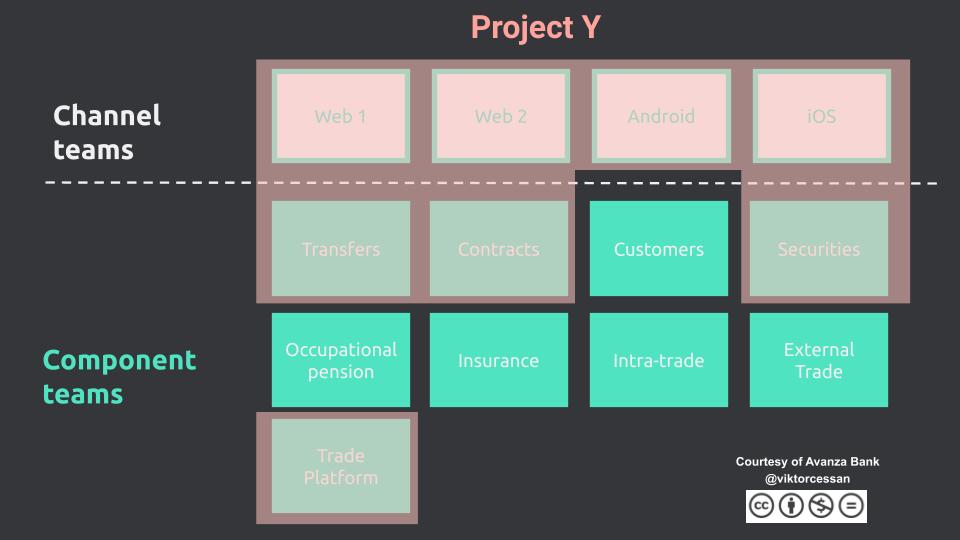
Visualization of how many teams a standard project would require. Most deliveries required the collaboration of multiple teams as division was made based of technology.
A vital challenge was to reshape and re-align the organizational structure to facilitate quicker responses and greater autonomy. Moving from a Technical Platform driven organization, to a customer value driven organization.
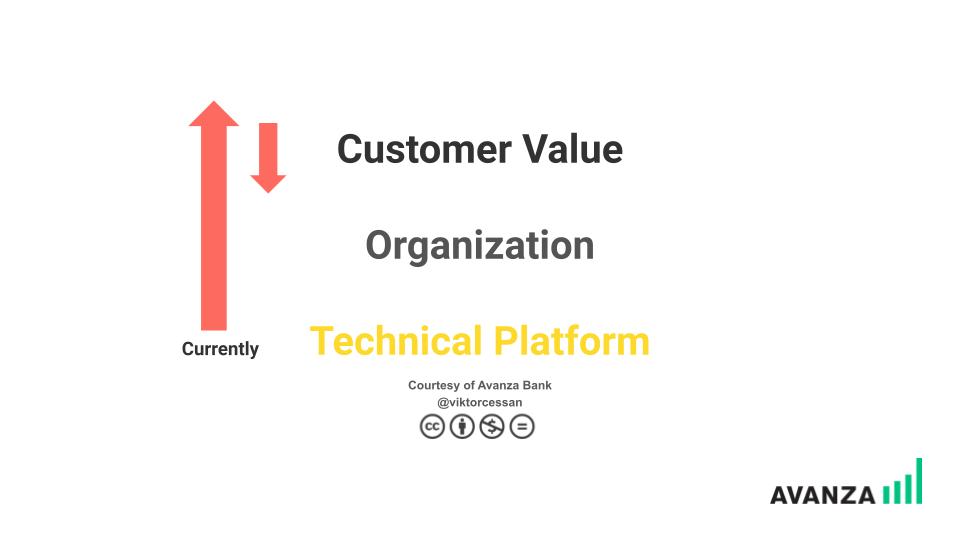
How Avanzas team, and organizational setup over time had evolved–by clustering them according to closeness of technology, and systems.

How Avanza eventually build their organization, and technology archicture.
Approach
The transformation was guided by a newly formed transformation team, including key stakeholders from various departments, and c-suite member. The team was tasked with identifying leverage points and implementing strategic changes.
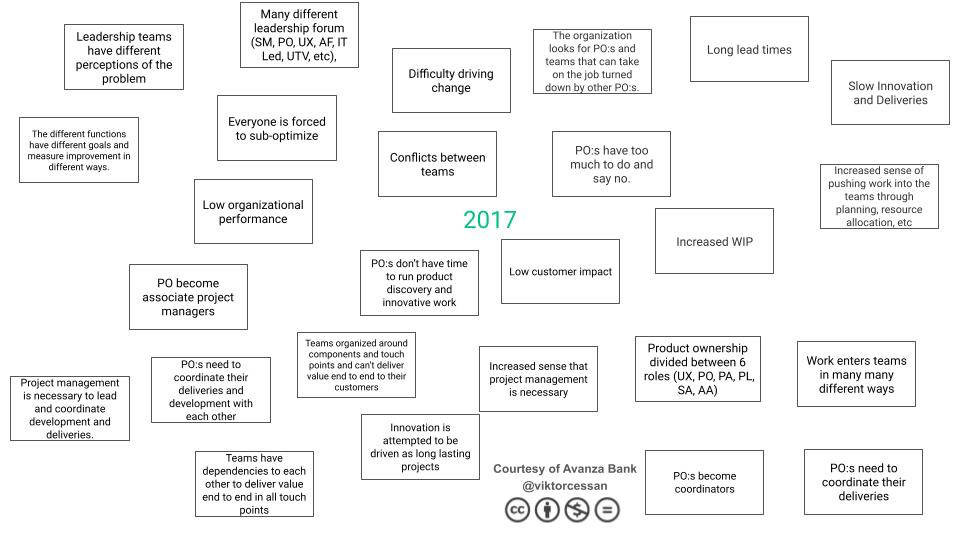
A collection of events happening at Avanza.

We then explored the interplay of events, identifying and isolating some patterns that we could deploy interventions towards.
With this knowledge, the transformation emphasized building autonomous teams around missions that aligned with company goals and leveraging continuous feedback to improve processes and outcomes.
Implementation
The transformation included:
- Identifying the value the organizations, and teams should be delivering divided into customer journey steps, and products (revenue streams)
- Redefining team structures to minimize dependencies and enhance autonomy.
- Introducing a peer feedback system to foster open communication and continuous improvement.
- Regularly revisiting and adjusting team missions and structures based on ongoing feedback and market changes.
- Build a leadership structure close to the teams that was able to remove obstacles from the team ultimately reducing lead time, and boosting motivation.

Teams were re-organized based on customer needs, revenue streams, and the value intended to be created. We did not speak about BAPO, or Conways law explicitly, but followed the reasoning.
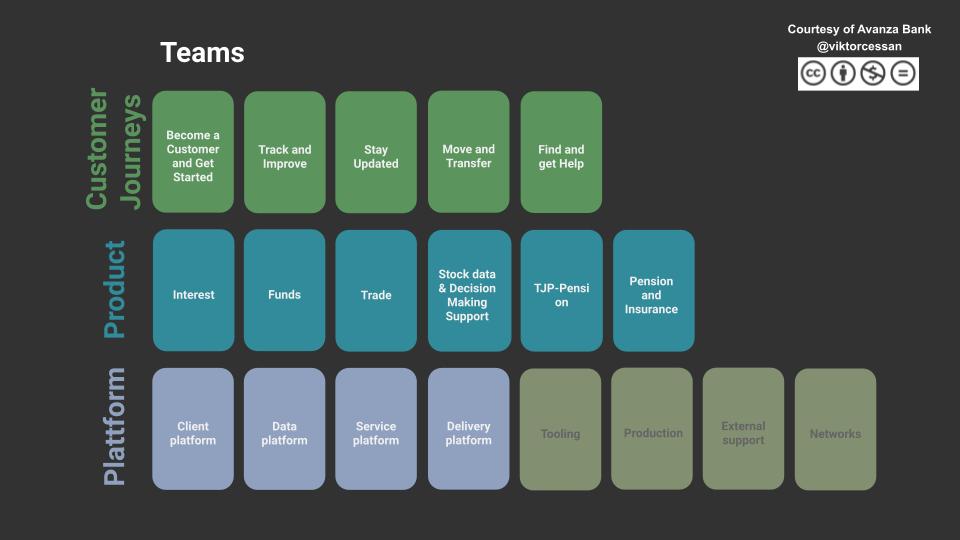
The new organization had teams organized around crucial customer journey steps based on research, the products Avanza offers to customers, and technical platforms necessary to enable and support the customer facing teams.
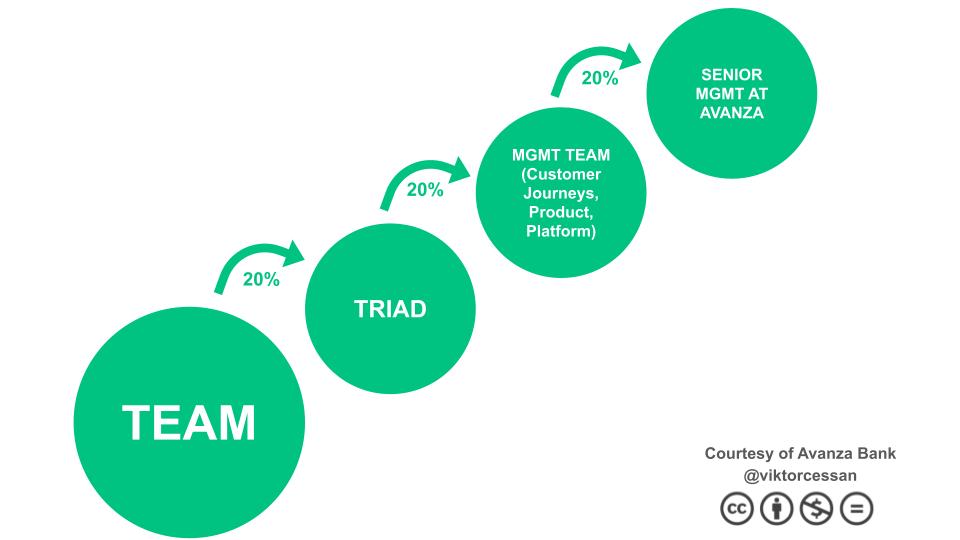
We build a leadership structure that was more capable of resolving team impediments, reducing the amount of escalations, improving motivation, speed, and quality.
Outcomes
Post-transformation, Avanza experienced a significant improvement in delivery speeds, team autonomy, and alignment with customer needs. Team member motivation increased, dependencies decreased, and the organization became more adaptable, with enhanced capability to innovate and respond to market demands swiftly. The improvements were noticed by team members, stakeholders, and even customers communicating over twitter with the product owners for specific features, literally remarking on the speed of iteration.
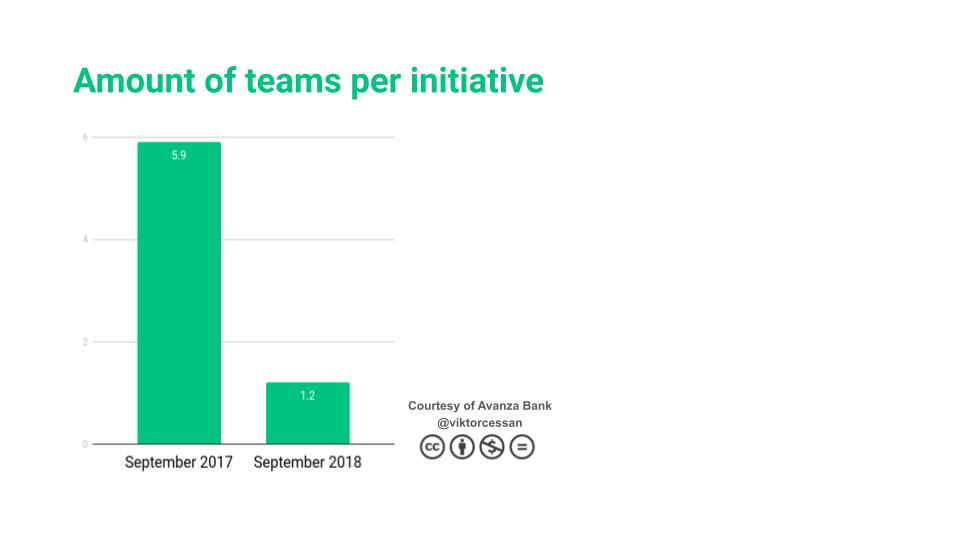
In a years time, we reduced dependencies from >5, to <2.
Conclusion
Avanza’s agile transformation illustrates the benefits of a well-structured and executed change strategy that deeply integrates feedback mechanisms and aligns with core organizational values. This approach not only improved operational efficiencies but also reinforced a culture of continuous improvement and customer-centricity.